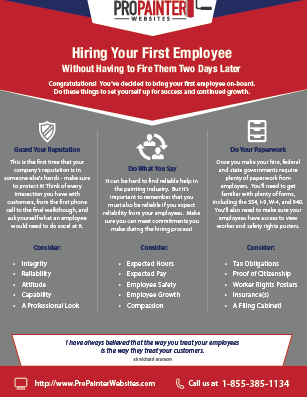Find Out Just How Seasonal Variables Affect Industrial Outside Painting Success And Discover The Very Best Times To Make Certain Lasting Outcomes For Your Project
Find Out Just How Seasonal Variables Affect Industrial Outside Painting Success And Discover The Very Best Times To Make Certain Lasting Outcomes For Your Project
Blog Article
Web Content Author-Regan Bagger
When you're preparing a commercial external painting project, seasonal variables can make or break your outcomes. You'll want to think about exactly how temperature level and humidity impact paint application and drying times. Choosing Keep Reading can guarantee your paint adheres effectively and lasts much longer. Yet which periods are really the very best for this sort of job? Let's discover the key elements that can affect your project's success.
The Effect of Temperature Level on Paint Application
When you're preparing an industrial exterior painting task, the temperature can substantially affect exactly how well the paint sticks and dries.
Preferably, you want to repaint when temperatures vary between 50 ° F and 85 ° F. If it's also chilly, the paint may not heal properly, leading to problems like peeling or fracturing.
On the other hand, if it's as well hot, the paint can dry also promptly, preventing proper bond and resulting in an unequal surface.
You need to also think about the time of day; early morning or late afternoon supplies cooler temperatures, which can be a lot more desirable.
Constantly examine the supplier's suggestions for the details paint you're utilizing, as they usually give advice on the perfect temperature range for optimum outcomes.
Moisture and Its Effect on Drying Times
Temperature level isn't the only ecological variable that affects your industrial outside paint project; humidity plays a considerable function also. High humidity degrees can slow down drying out times significantly, affecting the overall quality of your paint job.
When the air is saturated with wetness, the paint takes longer to treat, which can cause issues like inadequate attachment and a greater threat of mildew development. If you're painting on a particularly damp day, be planned for prolonged wait times in between layers.
It's critical to check local weather and plan accordingly. Ideally, go for humidity degrees in between 40% and 70% for optimal drying.
Keeping these factors in mind ensures your task remains on track and delivers a long-term finish.
Best Seasons for Commercial Outside Paint Projects
What's the most effective time of year for your commercial external painting jobs?
Spring and early fall are usually your best options. During these seasons, temperature levels are moderate, and humidity degrees are commonly reduced, producing suitable problems for paint application and drying out.
Stay clear of summertime's intense heat, which can trigger paint to completely dry also promptly, bring about poor attachment and finish. In a similar way, wintertime's chilly temperature levels can hinder proper drying out and curing, taking the chance of the longevity of your paint work.
Go for days with temperature levels between 50 ° F and 85 ° F for optimal outcomes. Bear in mind to inspect the local weather report for rain, as wet conditions can destroy your job.
Planning around https://garagepaintersnearme10864.blogdal.com/35513207/rejuvenate-your-home-the-impact-of-an-expert-paint-business-on-interior-decoration ensures your paint project runs smoothly and lasts longer.
Final thought
To conclude, intending your industrial outside painting jobs around seasonal factors to consider can make a significant distinction in the outcome. By organizing job throughout the suitable temperatures and moisture degrees, you'll guarantee better attachment and drying times. Bear in mind to watch on neighborhood weather report and select the correct time of year-- spring and very early loss are your best options. Taking these steps will certainly assist you accomplish a sturdy and specialist surface that lasts.
